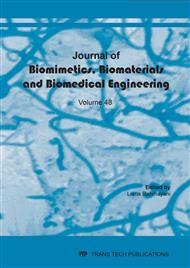p.85
p.92
p.99
p.105
p.111
p.119
p.126
p.134
p.141
The Complications of Biologic Width in Esthetic Anterior Restorations: A Case Report and Review
Abstract:
The biologic width is a specific concept that refers to the dimensional relationship between epithelial attachment, sulcus depth, connective tissue attachment, and alveolar crest. A harmony and precise relationship between periodontal tissue and the restoration of the teeth is fundamental to ensure function and esthetic. Biologic width includes both the connective tissue attachment and the junctional epithelium and has a mean dimension of approximately 2 mm. Violation of biologic width can result in localized crestal bone loss, gingival recession, localized gingival hyperplasia, or a combination of these three. Maintenance of gingival health is one of the keys to the longevity of both the teeth and restorations. A clinical crown lengthening procedure is needed to establish the biologic width, in a condition where a restored tooth developed a subgingival caries, fractured below the gingival attachment or failed crown restoration. This article presents a case reports and review that utilized gingivectomy procedures to corrected the complications because of the violation of biologic width.
Info:
Periodical:
Pages:
126-133
Citation:
Online since:
November 2020
Authors:
Price:
Сopyright:
© 2020 Trans Tech Publications Ltd. All Rights Reserved
Share:
Citation:


